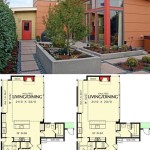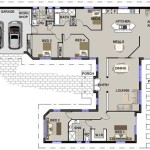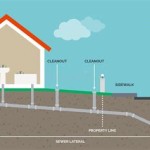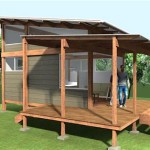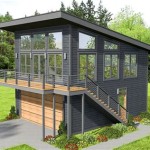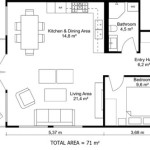What Is a House Plan?
A house plan is a comprehensive blueprint that outlines the layout, dimensions, and specifications of a residential building. It serves as a detailed guide for architects, builders, and contractors during the construction process, ensuring that the final structure adheres to the intended design and meets the homeowner's requirements. House plans encompass various aspects, including floor plans, elevations, sections, and construction details, providing a complete representation of the house's structure, functionality, and aesthetics.
Key Components of a House Plan
House plans typically include the following critical components:
Floor Plans
Floor plans are two-dimensional representations of each level of the house, showcasing the arrangement of rooms, walls, doors, windows, and other features. Detailed measurements and annotations are included to provide precise dimensions and specifications. Floor plans are essential for understanding the flow and functionality of the house, as well as for determining furniture placement and overall spatial arrangement.
Elevations
Elevations are drawings that depict the exterior views of the house from different angles, such as the front, rear, and sides. Elevations illustrate the exterior design, including rooflines, windows, doors, siding, and other architectural elements. They are crucial for visualizing the house's aesthetics and ensuring that the exterior design meets the homeowner's preferences.
Sections
Sections are cross-sectional views of the house, typically taken at specific locations to provide a detailed understanding of the building's construction and structural components. Sections depict the relationship between different elements, such as walls, floors, ceilings, and roof framing. They are essential for ensuring the structural integrity and stability of the house.
Construction Details
Construction details are magnified drawings that provide specific information about individual components, such as windows, doors, stairs, and roof structures. They include dimensions, materials, assembly methods, and other relevant information for builders and contractors to follow. Construction details ensure that the house is built according to the specified standards and specifications.
Types of House Plans
House plans can be categorized based on various factors, including:
Architectural Style
Different architectural styles, such as Colonial, Victorian, Modern, and Ranch, have distinct design features and characteristics. House plans can be tailored to specific architectural styles, reflecting the homeowner's aesthetic preferences and the overall character of the neighborhood.
Size and Square Footage
House plans vary in size and square footage, accommodating different living needs and budgets. Small, compact plans are suitable for single individuals or couples, while larger plans can accommodate families with multiple bedrooms and living spaces.
Number of Bedrooms and Bathrooms
The number of bedrooms and bathrooms is a crucial factor in determining the appropriate house plan. Families with children or those who frequently host guests may require a larger number of bedrooms and bathrooms.
Special Features
House plans can incorporate special features, such as basements, attics, balconies, porches, and garages. These features can enhance the functionality and value of the house, providing additional living and storage space.
Benefits of Using a House Plan
Utilizing a house plan offers significant benefits throughout the construction process:
Clear Communication
House plans provide a clear and concise visual representation of the intended design, facilitating effective communication between homeowners, architects, builders, and contractors. This ensures everyone is on the same page regarding the project's scope, specifications, and expectations.
Accurate Construction
Detailed drawings and specifications in house plans ensure that the house is built accurately according to the intended design. This minimizes costly errors and rework, resulting in a structurally sound and aesthetically pleasing finished product.
Cost Estimation
House plans provide accurate dimensions and specifications, allowing for precise cost estimations for materials, labor, and other construction expenses. This helps homeowners budget effectively and avoid unexpected costs during the construction process.
Time Efficiency
House plans streamline the construction process by providing a clear roadmap for builders and contractors. This reduces delays and inefficiencies associated with ambiguity or changing design requirements.

House Plans How To Design Your Home Plan

Floor Plan Wikipedia

House Plans How To Design Your Home Plan

Floor Plan Wikipedia

Where You Can Buy House Plans Live Home 3d

How To Read A Floor Plan With Dimensions Houseplans Blog Com

How To Read Floor Plans 8 Key Elements A Plan Foyr

House Plan Home Wiki Fandom

Components Of A Building Plan Ck

House Plans How To Design Your Home Plan
Related Posts

